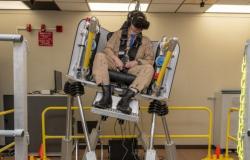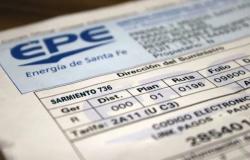
-
Both the US Artemis program and China’s ILRS need to produce food on the Moon
-
European initiatives such as Solar Foods and Green Moon Project have attracted the attention of space agencies
Two large international projects seek to establish a continuous presence on the Moon: the Artemis program, led by the United States and its partners, and the International Lunar Research Station (ILRS), promoted by China and its partners. What are your crew going to eat?
Food that keeps astronauts sane. The viability of long-duration lunar missions will depend on the quality of the food we can transport and grow there.
The crew members of the International Space Station consume dehydrated and heat-stabilized foods that are consistent enough not to crumble into small pieces that can be inhaled by the astronauts themselves.
However, the monotony of prepackaged foods can be a problem on long-duration missions. Lunar food will have to be nutritious, but also varied to “keep astronauts sane,” says Sonja Brungs, head of astronaut operations at the European Space Agency.
Turn air into protein bars. In search of ideas to produce food on the Moon, NASA launched the Deep Space Food Challenge in 2021. One of the selected companies is the Finnish Solar Foods, which has developed a process to produce proteins from carbon dioxide, hydrogen and oxygen.
Any habitat we build on the Moon will require oxygen for astronauts to breathe. Therefore, it will generate hydrogen and carbon dioxide as waste gases. Solar Foods can convert these gases into pasta or protein bars, obtaining the protein from bacteria.
The Spanish project to cultivate on lunar soil. There are also space greenhouses, which the Spanish initiative Green Moon Project wants to take to the Moon. This project, which began in 2016 with its selection for the Google Lunar X Prize, has been adding partners to study how terrestrial crops are affected by the reduced gravity of the lunar environment.
Green Moon Project aspires to position a greenhouse in space, first on a space station (public or commercial) and then on a lunar lander. Jose María Ortega, the founder of the project, explained to Xataka:
“We have collected a lot of theoretical and experimental information to generate more knowledge in this area that will be important not only for food, but also to support the generation of oxygen thanks to the photosynthesis of plants and for the fact that it helps in mental health and reduce stress among crew members.
The first plant that sprouted on the Moon. No one had managed to grow vegetables on a celestial body other than Earth until Chongqing University sent cotton seeds to the Moon aboard the Chinese Chang’e-4 mission. They ended up successfully germinating in January 2019.
That same year, Gengxin Xie, project leader in Chongqing, took advantage of a visit to Spain to sign an agreement with the Green Moon Project, which has just borne fruit in the form of a joint scientific paper.
The study complements the lunar experiment with data from experiments carried out on land using the LZS-1 lunar regolithic simulant, which is manufactured based on rock substrate from the island of Lanzarote, whose volcanic soil has similarities in its composition to that of the Fra Mauro area. of the moon.
The Moon is a hostile terrain for agriculture. On the Moon there is no atmosphere, nor a magnetic field that protects its surface from the cosmic and solar radiation that impacts it. Furthermore, the temperature difference between lunar day and night, which last 14 Earth days each, varies between -100 and +100 ºC.
However, there is abundant frozen water at the poles, where the Artemis and ILRS missions intend to build their colonies. Water and electricity, obtained from solar panels and small nuclear reactors, will be the basis of an ecosystem that will depend deeply on hydroponic (soilless) and adroponic (suspended in the air) agriculture.
Image | NASA, CNSA
In Xataka | For the first time since the 1970s, it is not clear that the United States is actually capable of sending astronauts to the Moon





